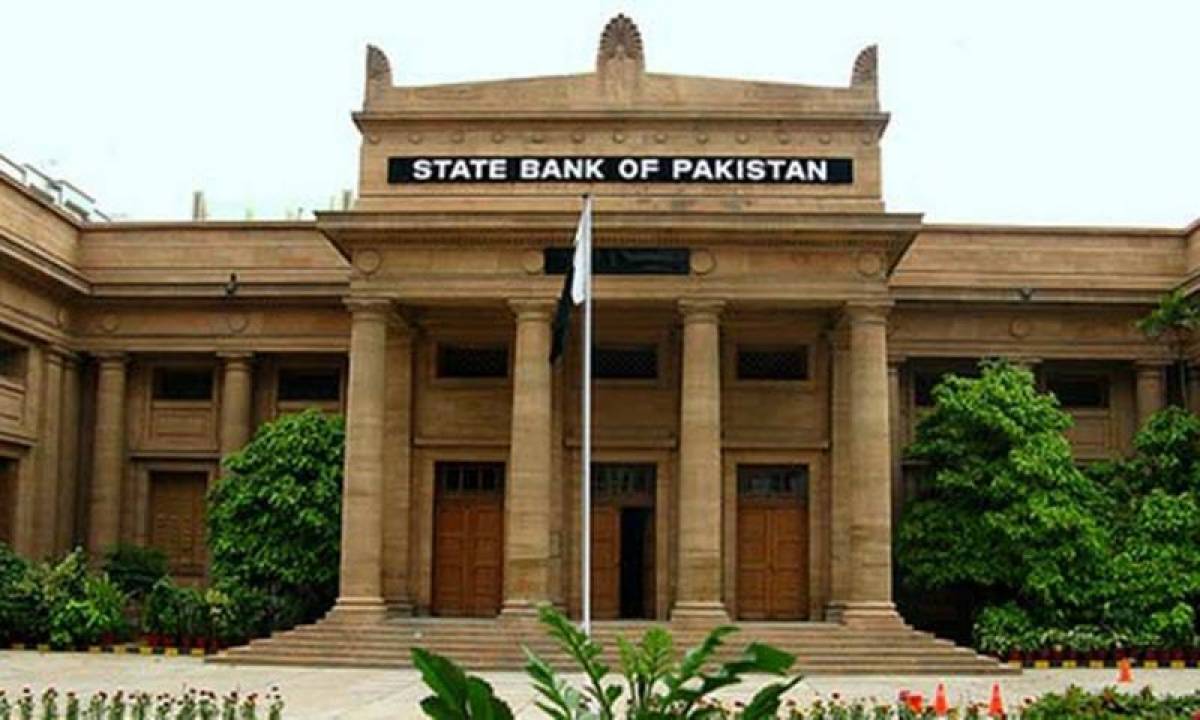Both the mainstream and social media in Pakistan are both abuzz with negative commentary on the government’s purported move to strengthen the autonomy of the State Bank of Pakistan (SBP).
The critics of the proposal are taking two different if somewhat related lines of attack. The first maintains the amendments are being allegedly pushed through at the behest of the International Monetary Fund (IMF), which, the argument goes, should be a sufficient reason for setting them aside. The second line of attack is that the proposed changes, if carried through, will spell disaster for Pakistan’s economy by, among other things, giving untrammeled powers to the central bank.
To take a dispassionate look at the initiative, we must first take stock of the purport and context of the reform.
In the past, SBP has remained beholden to the Ministry of Finance, in turn subject to the exegesis of electoral politics. A review of past policy lays bare how monetary and exchange rate policies were tailored to create a perception of better economic conditions before successive general elections. Both the 2008 and 2018 financial crises saw the outgoing governments put their electoral interests above the policy compulsions of a central bank.
A related matter is the SBP’s traditional readiness to finance the government’s fiscal deficit by printing currency notes, which is highly inflationary in its effects. On the other hand, you cannot really hold the SBP responsible for measures of this kind when it is acting by and large at the behest of the Ministry of Finance.
Advocates of the proposed reform say missteps and distortions like these can be avoided by taking the central bank out of the control of the Ministry of Finance. They also maintain that if the proposed reform is pushed through, there is a fair chance for Pakistan to break free of the rut of frequent boom and bust cycles.
The proposed reforms are intended to locate the responsibility for these central bank functions squarely with the SBP – safely outside the control of the Ministry of Finance and thus free of political meddling.
The International Monetary Fund (IMF) argues, and the incumbent government agrees, this is both in line with the international best practice and serves the best interests of Pakistan.
However, dissenting voices argue the autonomy of the central bank as envisaged in the reform package can cause difficulties if the teething problems are not addressed timely and properly. They point out that the negative impact of policy rate changes in recent times came from the harsh policy actions meant for growth without regard to maintaining monetary stability including inflation, exchange rate, and balance of payments.
They further maintain that if the falling value of rupee and the rising debt burden were to persist, this autonomy will shift more power to SBP and its governor, leaving the government deal with the fallout of such policies.
In other words, if the amendments are pushed through as envisaged, the SBP’s powers to impact the lives of the public will increase but its sensitivity to or accountability by public representatives will decrease. This looks very much like an erosion of both democracy and sovereignty.
Background & context
International experience and economic literature have demonstrated that countries with an independent and accountable central bank have lower inflation and greater financial stability over long periods of time.
This is because independent central banks have their objectives clearly specified and are held accountable for their actions to achieve their objectives. Typically, in modern central banks these objectives prioritize maintaining price and financial stability, which is a key requirement for improving people’s livelihood and sustained economic growth.
In Pakistan, the role of the State Bank of Pakistan (SBP) was first defined in the State Bank of Pakistan Act 1956. Since then, the SBP Act has been amended several times to reflect changes in economic thought globally, including advocating for an independent role of central banks. Major revisions in the SBP Act came in 1994, 1997, 2012 and 2015. The introduction in parliament of SBP Amendment Act 2021 is a continuation of that process to modernize the central bank.
The proposed amendment of the Act seeks to clearly define the objectives of the SBP, improve its functional and institutional autonomy to achieve its objectives, and strengthen its accountability in achieving its objectives.
It is important to note that the proposed amendments are not only based on international best practices in central bank legislations but also take into account the ground realities in Pakistan.
The case for the amendment
In light of international best practices and domestic experiences, legal framework of SBP is proposed to be amended to clearly define the objectives of SBP to improve its accountability; outline its functions in line with its objectives; provide necessary financial resources to help achieve objectives; increase functional and administrative autonomy of SBP; improve transparency in operations of SBP; and strengthen accountability by bolstering oversight functions stronger and enhancing reporting requirements.
At the moment, SBP objective as defined in the preamble of the Act, is to secure monetary stability and fuller utilization of the country’s productive resources.
The amendment proposal seeks to define for the SBP a primary objective (domestic price stability), a secondary objective(financial stability), and a tertiary objective (support the government’s economic policies to foster development and fuller utilization of resources).
In order to achieve these objectives, SBP functions are proposed to be collated under a new section after refinement and discontinuation of certain functions (i.e. quasi-fiscal operations).
Another objective of the reform is to provide the SBP with sufficient financial resources. To this end, the central bank’s share capital is proposed to be enhanced. At the moment, the SBP authorised and paid-up capital is PKR 100 million. The amendment proposal seeks to increase its paid up capital to PKR 100 billion and authorised capital to PKR 500 billion.
The proposal also to provisions for the SBP’s paid up capital and general reserves to increase to 8 percent of its monetary liabilities through retention of 20 percent of distributable profits each year. The general reserve will be used only to increase capital or cover losses.
The proposal to provide for recapitalization says if at any time the SBP’s capital and general reserve fall below zero, the board will prepare a report on causes and extent of shortfall and the federal government will transfer to the Bank the amount required to restore paid-up capital in cash or negotiable instruments.
The SBP has no specific formula for distribution of profits as of now except a requirement for prior government approval. The proposal looks to set up a mechanism based on a formula to be incorporated in the SBP law, without resort to government approval.
The elements of autonomy
As part of its push to augment the SBP’s functional and institutional autonomy, the reform proposal looks to do away with the limited government borrowing allowed at the moment.
The proposal looks to do away with the SBP’s quasi-fiscal operations or monetary actions taken on behalf of the government – rural credit, industrial credit, export credit, loans guarantees, and housing credit. However, refinancing facilities, which the SBP has used to support access to credit in underserved sectors, will still be allowed.
Another area targeted for reform under the head of strengthening functional and institutional autonomy of the SBP is the mechanism for coordination between the SBP and the government. The proposal is to discontinue the existing arrangement of Monetary and Fiscal Policies Coordination Board, and require the SBP Governor and Minister of Finance to establish liaison.
The Governor and the Finance Minister are envisaged to establish a close liaison with each other, keeping each other fully informed on all matters which jointly concern the Bank and the Finance Division.
Another aspect of SBP’s functional institutional autonomy is indemnification of action in good faith.
As of now, every person in the service of the SBP is deemed to be a public servant within the meaning of section 21 of the Pakistan Penal Code. The proposal is to expressly bar any suit, prosecution, or other legal proceeding including for damages to be brought against the SBP or any of its functionaries.
The indemnity will extend to all SBP functionaries including incumbent and former governors, deputy governors, members of any board committee and monetary policy committee. It will cover any act of commission or omission in exercise or performance of any lawful functions, power or duty – unless such act is done in bad faith and with mala fide intent.
In case of any such proceedings being brought against an indemnified functionary, they shall be indemnified by the Bank which shall bear all the expenses thereof, till final decision of the case.
Finally, the reform package purports to insert language to the effect that no action, inquiry, investigation or proceedings shall be brought against the SBP functionaries by any federal or provincial agency including the NAB and FIA without prior consent of the SBP Board of Directors. This protection will equally extend to former directors, Governors, Deputy Governors of the Bank.
Concluding remarks
It is important to understand that the current reform proposal is in the tradition of a long series reforms undertaken from time to time through amendment of the State Bank of Pakistan Act,1956.
The SBP was first granted autonomy in February 1994 under a financial sector reform program. This autonomy was further bolstered in 1997. The two most recent rounds of reform came in 2012 and 2015.
The public perception of the reform being dictated by the IMF is misplaced because the SBP has been working on the amendments since 2014-15. The work involved review of central bank legislation from ninety-five countries so the draft the SBP came up with was based on local context and international best practices.
At the start of 2020, SBP shared the first draft of its reform proposal to the IMF for comments. After incorporating some of the changes proposed by the IMF, the SBP submitted the draft to the Ministry of Finance in April 2020.
Back and forth continued going through over a dozen drafts and finally a draft was approved by the federal cabinet this month. The next step is for the draft reform bill to be tabled in the parliament to ensure parliamentary purview and political ownership. That is likely to happen when the National Assembly is next in session.
Overall, it is fair to say the reform initiative is both Pakistani-owned and Pakistani owned, although the authorities did take the IMF on board to vet the draft. The impression of the process being unduly hasty is likewise misplaced because the SBP has been working on the draft proposal for years.










